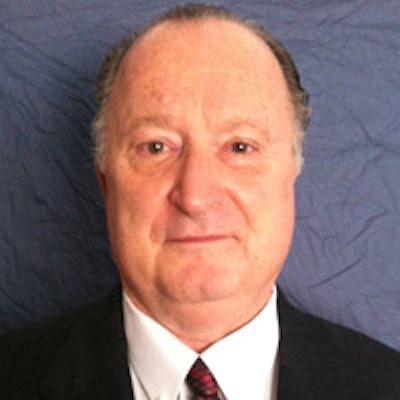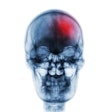
An unheralded, but momentous event took place in the annals of data collection that foretells the U.S. rolling out of the Great Recession with better times ahead, while, at the same time, demonstrating the increased expectation of greater dollar sums for the pricing and valuation of the sale of dental practices and dental practice management groups.
First, a bit of background.
 Thomas Climo, PhD, is a dental practice management consultant and a past professor of economics in England.
Thomas Climo, PhD, is a dental practice management consultant and a past professor of economics in England.Coming out of the '60s, economics was lumbered with the negative moniker of a social science in name only and more of a mathematically sound, tautological system of analysis predicated on questionable assumptions and hypothetical, nonempirical input. The old joke about the can opener mocked professionals, particularly economists, who base their conclusions on unrealistic or unlikely assumptions. The joke originally came from the book, Economics as a Science (1970), as related by its author, Kenneth Boulding, who wrote:
There is a story that has been going around about a physicist, a chemist, and an economist who were stranded on a desert island with no implements and a can of food. The physicist and the chemist each devised an ingenious mechanism for getting the can open; the economist merely said, "Assume we have a can opener"!
This denigration of economics by Boulding came a little too early for what was soon to follow from the magnificent, empirically driven work on stock markets, stock market prices, stock market pricing risks, and option pricing, all at the hands of our finest social scientist of the latter 20th century, Fischer Black.
As Perry Mehrling tells the story in his tribute, Fischer Black and the Revolutionary Idea of Finance (2005):
In December of 1997, Robert Merton and Myron Scholes took the stage in Stockholm to accept the Nobel Prize in Economics. Absent from the podium was Fischer Black, the "Black" of the famous Black-Scholes options pricing formula, the formula that was to the derivatives revolution in finance what the discovery of the structure of DNA was to technology. Black had died in 1995, two years short of the ultimate accolade.
As important as option pricing and understanding of risk to pricing was in the catalogue of work of Black, of more importance, in my opinion, is the legacy of the empirical data he left us on more than 1,000 companies in over 100 industries grouped in terms of a variety of economic and financial measures from net income margin through cost of capital to beta risk, all calculated not from hypothesis but from the actual financial statements and reports of the companies contained in the catalogue.
Black's work has been admirably continued and expanded to more than 6,000 companies by Aswath Damodaran, a professor of finance at the New York University Stern School of Business. One look at one financial measure -- cost of capital -- shows the analytical importance and usefulness of the empirical results of the table. (The entire dataset from the Stern School is available here; cost of capital is available here.)
Of the more than 100 industrial sectors below, I center in on the private/public equity line item to find the following revealing results dated at January 2014:
| Industry name | No. of firms | Beta | Cost of equity | E/(D+E) | Std dev in stock | Cost of debt | Tax rate | After-tax cost of debt | D/(D+E) | Cost of capital |
| Public/private equity | 20 | 1.67 | 11.40% | 78.40% | 33.66% | 4.04% | 20.12% | 2.42% | 21.60% | 9.46% |
Here is not the forum for describing how important each of the eleven columns are for an understanding of the financial performance of any particular industrial sector, rather it is to look at the last column, cost of capital, because it is the hurdle rate used by public and private equity to determine a successful rate of return for an award of an investment in your practice, group, or company. Since private equity easily out masses the available banking and individual sources of funds available for the purchase of dental practices and dental practice management groups, public/private equity cost of capital is the correct hurdle rate to use for valuation and pricing the sale of your dental practice -- it is the opportunity cost of an investment in the dental industrial sector as opposed to some other.
Returning to the theme of the title of this article, the Stern School's results are published every January from the financial performance of the companies in the various industrial sectors. Here is what is fascinating from a chronological point of view when looking at public/private equity cost of capital:
| Empirical results for the pubic/private equity industrial sector | ||
| Year | Cost of capital | Change |
| 2012 | 10.14% | Base year |
| 2013 | 10.97% | +0.83 points |
| 2014 | 9.46% | -1.51 points |
In other words, a dental practice, dental group, or company with earnings before interest, taxes, depreciation, and amortization (EBITDA) or net income of $100,000 in 2013 having a business valuation of $911,577 ($100,000 ÷ 10.97%) would now have, in 2014, a business valuation of $1,057,083 ($100,000 ÷ 9.46%), a change to the favor of the seller of $145,506, or a 16% improvement upon the prior year's valuation.
This means public/private equity is more aggressive in 2014, will take more risk, will pay more for this risk, and, in general, will raise the valuation of the dental industry by about 16%.
There are many naysayers about the prospect of dentistry in the future -- from Medicaid woes to procedure restrictions and minimalist pricing on the part of insurance carriers -- but from the point of view of the investment community, to judge by this move downward in the investor's hurdle rate, I'd say prospects are bright for any industrial sector where the cost of capital has fallen from 2013 to 2014. Since I am on record as recommending that the dental industry use the public/private equity cost of capital for its hurdle rate, I see a bright 2014 ahead for dentistry.
Thomas Climo, PhD, is a professor emeritus of accounting and finance at a major university in the U.K. He has published extensively about the importance of modern managerial and financial decision-making for dentistry. He is a consultant to corporate and solo practitioner dental practice management companies in the states of Arizona, California, Connecticut, Nevada, New Hampshire, New York, and Massachusetts. He can be reached by email at [email protected] or by telephone at 702-578-2757.
The comments and observations expressed herein do not necessarily reflect the opinions of DrBicuspid.com, nor should they be construed as an endorsement or admonishment of any particular idea, vendor, or organization.



















